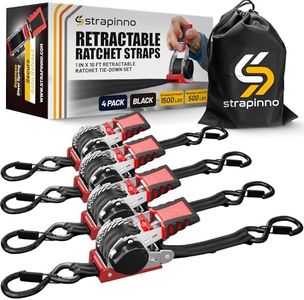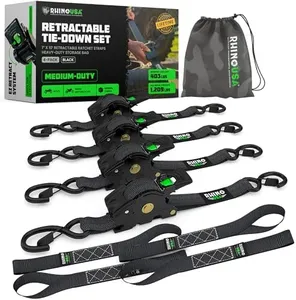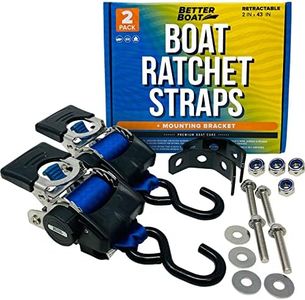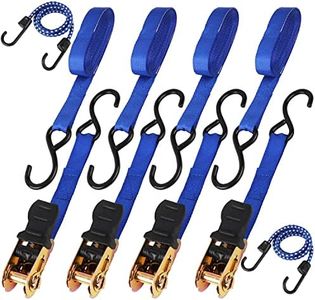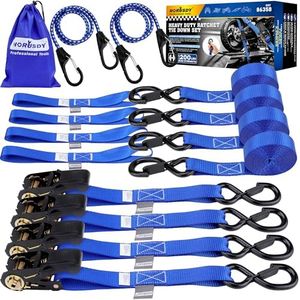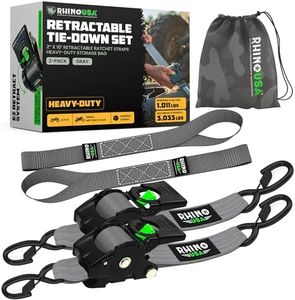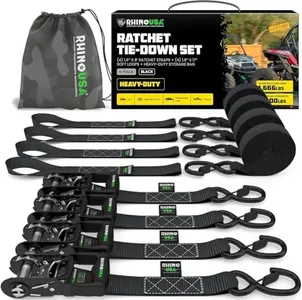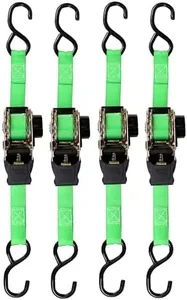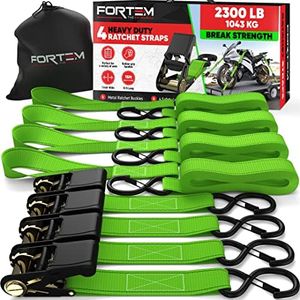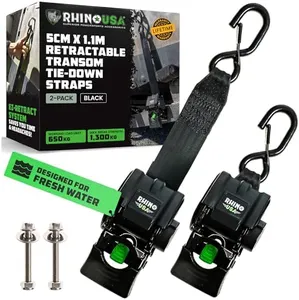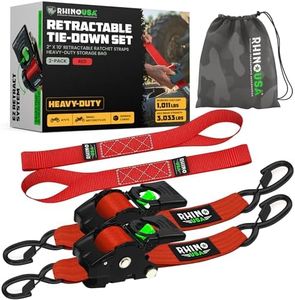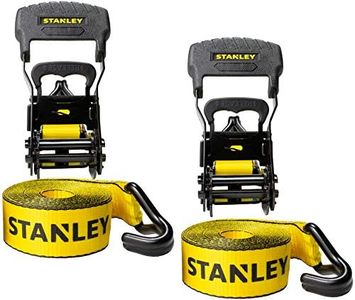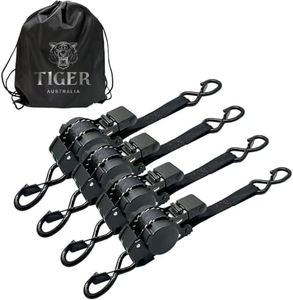We Use CookiesWe use cookies to enhance the security, performance,
functionality and for analytical and promotional activities. By continuing to browse this site you
are agreeing to our privacy policy
10 Best Ratchet Straps
From leading brands and best sellers available on the web.Buying Guide for the Best Ratchet Straps
When shopping for ratchet straps, it's important to focus on finding a set that matches your specific needs, whether that's securing items on a roof rack, moving heavy furniture, or strapping down equipment in a truck. Understanding the key specifications will help you make sure you're picking straps that are safe and practical for your intended use, so you avoid both underperformance and unnecessary bulk.Load Capacity / Breaking StrengthLoad capacity tells you the maximum weight the strap can safely secure during normal use, while breaking strength is the force at which the strap will fail. This is crucial because using a strap below its safe rating can result in dangerous slippage or snapping. Ratchet straps are usually labeled with safe working load ratings—light-duty straps start around a few hundred pounds, mid-range options handle 1,000-2,000 pounds, and heavy-duty straps go well above that. To pick the right one, think about the heaviest object you intend to secure and choose a strap whose load capacity comfortably exceeds that weight.
Strap LengthStrap length determines how much you can wrap around or over your cargo. Short straps (6-10 feet) are good for smaller loads or close tie-downs, medium lengths (12-20 feet) handle larger items or give more flexibility, and long straps (20 feet or more) suit oversized or multiple pieces of cargo. Choose based on the typical size of what you'll secure, keeping in mind it's usually better to have a little extra length than not enough—just make sure excess strap can be safely secured to avoid flapping or tangling.
Strap WidthStrap width is related to both strength and stability. Thinner straps (typically 1 inch) are lighter and suitable for lighter loads or delicate items, while wider straps (1.5 to 2 inches or more) offer more strength and stability, making them ideal for heavier or larger loads. To choose, match your cargo size and weight: heavier or bulky items benefit from wide straps, while thin straps are better for securing smaller objects.
Material QualityMost ratchet straps are made from polyester webbing, which resists stretching, moisture, and UV damage. This durability matters for both indoor and outdoor use. High-quality materials mean your straps will last longer and perform reliably, even in tough conditions. When choosing, look for strong webbing with tightly woven fibers; this helps ensure longevity and resistance to fraying or tearing.
Ratchet MechanismThe ratchet mechanism is what lets you tighten the strap securely and release it easily. A solid, smooth-action ratchet is important for reliable tensioning—cheaper mechanisms can jam or break. Ratchets vary in size and leverage; a larger handle gives you more force, which is useful for heavy loads, while smaller ratchets are more compact for lighter-duty work. Think about how much tension you need and how comfortable the handle feels for your hand strength and frequency of use.
Hook TypeHooks on the ends of the straps attach to anchor points like D-rings or rails. Common types are S-hooks, J-hooks, and flat hooks. S-hooks are simple and versatile, while J-hooks are more robust and suited for heavier loads, and flat hooks give a secure hold on the edges of truck beds or trailers. Choose based on the anchor points you'll use most often, and make sure the hook style fits your tie-down setup for a safe hold.
